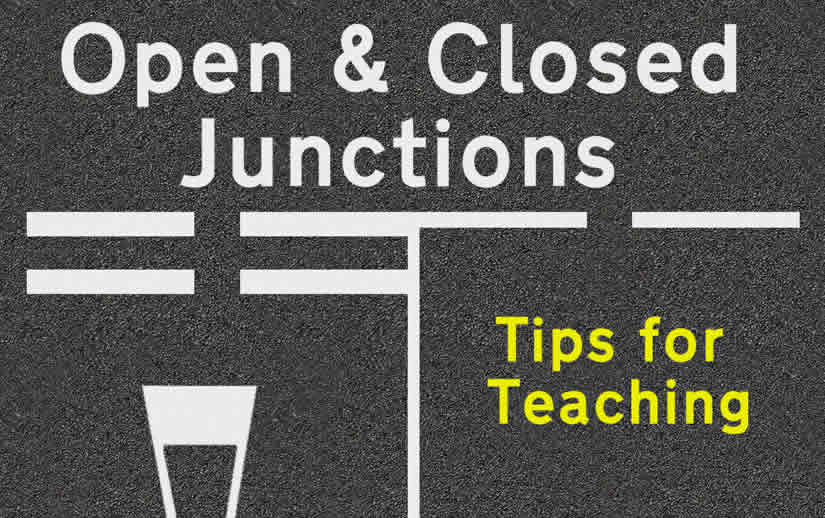Junctions represent the most frequent locations for traffic accidents and as such, junctions feature heavily on the driving test. If you’re teaching someone to drive, you’ll need to provide the learner with plenty of practice at junctions. One aspect of junctions you’ll need to teach is open and closed junctions and includes:
- What an open and closed junction is
- How to distinguish an open or closed junction
- Scan the road not only near and mid, but far ahead
- Use of correct speed based on whether the junction is open or closed
- Using the MSPSL driving routine
- Anticipate and plan ahead for potential hazards
Teach Over a Variety or Road Types
All driving test centres throughout the UK use specific routes devised by the test centre manager. The test routes are devised in such a way as to incorporate as many different junction types as possible. The latest driving test routes can be downloaded to your smart phone via the Driving Test Routes App.
Introduce the learner driver to a variety of road types including busy main roads, quiet residential streets and if possible, country roads. This way, they’ll encounter many open and closed junctions.
Use Tried and Tested Teaching Methods
When driving instructors teach junctions, they use a routine called Mirrors, Signal, Position, Speed and Look, which is abbreviated to MSPSL. By using this routine, you’ll ensure that the learner driver carries out all the correct procedures and in the correct order.
Conducting Driving Tuition
Start off, fully guided and as you’re approaching junctions, explaining what an open or closed junction is and what hazards are associated with them before and after they exit the junction. Talk them through the MSPSL routine at the approach of every junction. Make frequent stops to talk through the junctions that were just attempted. Make a point of noting all the good positive points, but also bring there attention where they went wrong and what needs improvement.
As they progress and become more confident, move to prompted, asking what they see and what potential hazards may occur ahead. At this stage, whilst on the move, you’ll be asking them lots of questions rather than telling them what to do.
Your ultimate aim is independent, where the learner requires little or no input from yourself. Even when they become independent, keep an eye out for mistakes and ensure that you correct them.
Scanning the Road
Teach the learner to scan the road. This means looking ahead not only to the near and mid-ground distance, but to the far distance also. This is to help them to distinguish in good time whether a junction is open or closed and to anticipate and plan ahead accordingly. Scanning the road also means checking for hazards to the left and right (peripheral vision) and to make effective use of mirrors.
Anticipate and Plan Ahead
Anticipation and planning takes time to perfect. There’s a lot to do while learning to drive, from controlling the car, dealing with other road users and observing road signs and road markings. Anticipation and planning comes a little later once the learner driver becomes a little more confident with the fundamentals of driving.
The aim is to combine the MSPSL driving routine with effective observations (scanning the road) so that the learner can begin to form a mental picture of what situations may occur ahead. Ultimately the learner needs to anticipate what situations or hazards may be ahead and to plan for them in advance.
Commentary Driving
Use commentary driving where the learner will verbally speak aloud about what junction they’re approaching and what hazards they can expect. Commentary driving is an excellent driving technique as it improves driver focus and allows for the supervising passenger to know what they’re thinking. Any potential or actual hazards they miss, ensure that you let them know.
